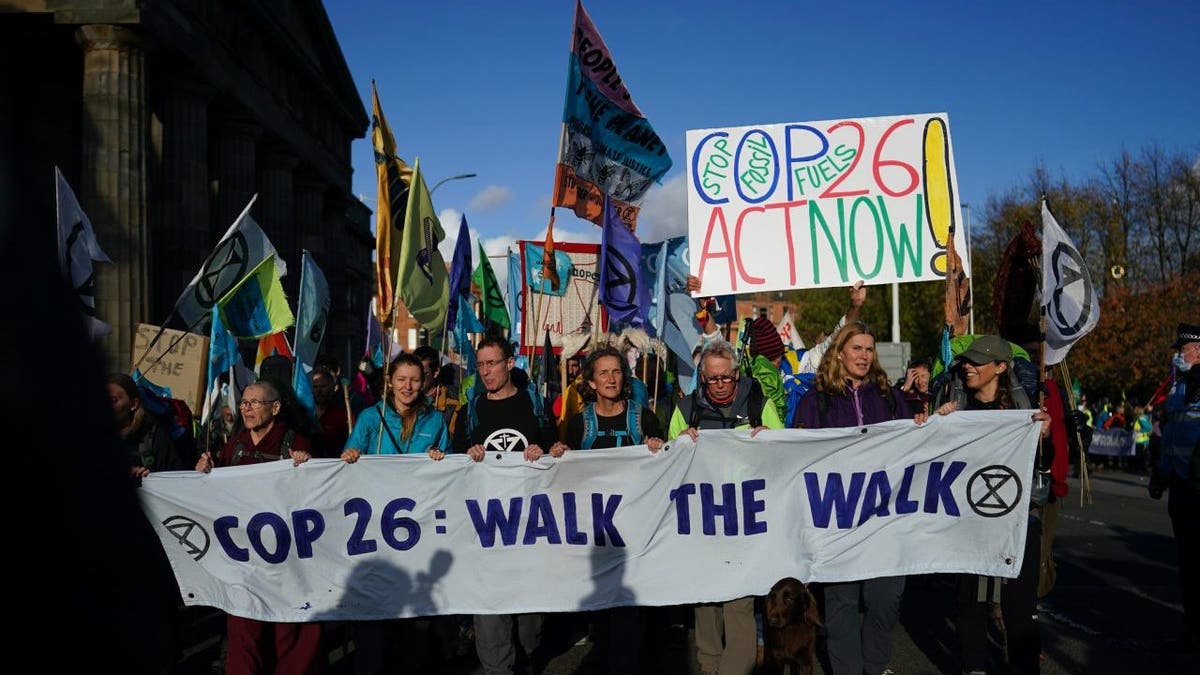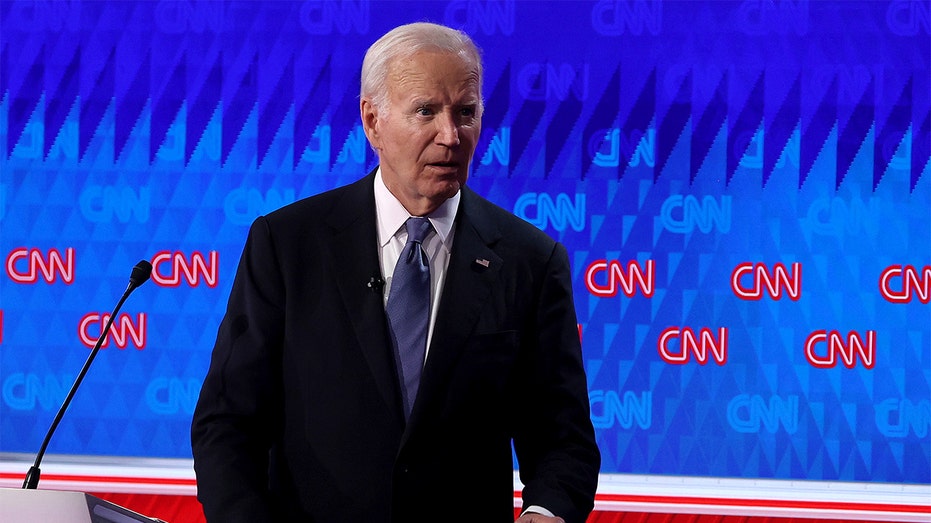With COP26 climate change conference underway, world leaders look toward drastic cuts in emissions
To avoid catastrophic climate change, the roughly 100 heads of state attending COP26, the UN climate conference in Glasgow, Scotland, must agree to cuts that collectively equal a net global emissions reduction of greenhouse gases of 45% by 2030, according to the Intergovernmental Panel on Climate Change.

As the climate change conference begins this week in Glasgow, Scotland, keep in mind two numbers: 1.5 and 45.
Most world leaders have agreed to the scientific consensus view that the planet is a ticking time bomb. If temperatures increase more than 1.5 degrees Celsius (2.7 Fahrenheit) the world cannot avoid catastrophic climate change.
BIDEN SENDS ARMY OF AIDES, CABINET MEMBERS TO GLASGOW CLIMATE SUMMIT AMID MAJOR PROBLEMS AT HOME
To avoid this, the roughly 100 heads of state attending must agree to cuts that collectively equal a net global emissions reduction of greenhouse gases of 45% by 2030, according to the Intergovernmental Panel on Climate Change.
To achieve that figure, the U.N. Environmental Program says countries must cut greenhouse gas emissions by 7.6% annually over the next eight years. Every fraction of a degree of warming, a U.N. panel says, will produce more wildfires, floods and famine.
There are two ways to get there. One uses natural gas as a bridge fuel to augment wind and solar. The other ends all new fossil fuel production. Rep. Garret Graves, R-La., says that would be a disaster.
"We're going to have a 50% increase in energy demand globally over the next 29 years, a 40% increase in natural gas demand," he says. "We can either provide those clean energy solutions out of the United States or we can allow China to service those countries and that demand, we can allow Vladimir Putin to do it. It doesn't make sense."
The Biden administration proposes the U.S. reduce its emissions 50-52% below 2005 levels by 2030, roughly double the U.S.' previous goal. The 27 nations of the E.U. vowed to reduce their emissions by 55% below 1990 levels by 2030, or roughly 7% a year. Earlier this year, Japan raised its targeted reduction to 46% from 26% from 2013 levels.
"We are determined to meet our goal of a 50% reduction in emissions by 2030," says Sen. Ed Markey, D-Mass. "The planet is running a fever. There are no emergency rules for planets. We have to pass this legislation now."
OBAMA TO ATTEND UN CLIMATE SUMMIT IN GLASGOW
The legislation Markey supports and President Biden proposes rewards utilities that replace coal and natural gas with wind and solar, while penalizing those that don't. In the transportation sector, Biden favors subsidies of up to $12,500 to purchase electric cars.
There are five major greenhouse gases. The largest, carbon dioxide, comes from two major sources, vehicles and power plants.
China, the world’s largest polluter, says its emissions are still rising but should peak before 2030. It pledges to spend more on nuclear and renewables, but last year it added three-quarters of all the world’s new coal plants, according to Global Energy Monitor. Coal is the dirtiest of fossil fuels.
Other major emitters, like India and Russia, have not submitted any new pledges to cut their pollution.
Australia, a big exporter of coal and a large per capita emitter of greenhouse gases, has not submitted an aggressive climate plan but claims it will produce net zero carbon emissions by 2050, matching U.S. and E.U. targets.
These promises, which are not binding but aspirational, are known as "nationally determined contributions" or NDCs. There is no enforcement or penalty for failing to meet them and so far, based on the pledges following the Paris Agreement of 2015, collectively the world will fall short.
Because of a "commitment gap" between what countries say and what they do – the planet is on track to heat roughly 2.7 Celsius (above pre-industrial times). The U.N. says world leaders need to cut emissions five to seven times faster than currently pledged to avert disaster.
It’s possible to limit global warming to 2.2 Celsius by 2100 if countries all live up to their Glasgow pledges. If they only meet targets agreed to in Paris, temperatures will rise 3.2 degrees.
Aside from the dueling pledges and carbon shaming, watch for the fight between developed nations like the U.S. and those in the E.U. versus China, India and others where hundreds of millions still don’t have electricity.
Developing nations argue the industrial giants of the West polluted the world and now they are being asked to pay for it – with equal cuts despite a much lower standard of living. The G20 (a group of 19 countries and the EU) account for 78% of all emissions.
Countries vulnerable to climate change want $100 billion to help handle the natural disasters developed countries caused – heat waves, crop shortages, hurricanes and wildfires.
Climate optimists look to several fronts: Market forces have reduced the price of wind and solar; the cost of battery storage is falling; the adoption of electric cars is quickly growing; and the world’s seven largest economies have agreed to stop financially supporting new coal projects overseas.
Though often condemned for generating the second-highest greenhouse gases per capita after Canada, the U.S. actually reduced its emissions faster than any other nation in the last decade, followed by Japan.



